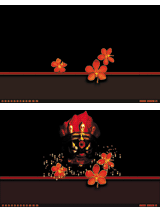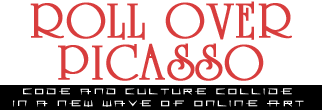|
|
Some sites offer even greater interaction and -- as in computer
games -- the possibility of choosing your own path. Grammatron has 1,100 "text
spaces," 2,000 links, and more than 40 minutes of original
soundtrack, plus "unique hyperlink structures by way of specially
coded JavaScripts." Users may be startled by one of the first
messages to appear: "Please wait while the machine reads you."
Control, never altogether in the hands of the viewer, is soon
exerted by the code. Text comes at you in a series of screens full
of allusion and metaphor as you follow a tale "about cyberspace,
Cabala mysticism, digicash paracurrencies, and the evolution of
virtual sex in a society afraid to go outside and get in touch with
its own nature."
Suddenly, a sales pitch materializes along the bottom of your
browser: "How about sending me a few digicash credits, and I'll blow
your mind away." Even "Hypertextual Consciousness 1.0" -- a lengthy
treatise that purports to explain the story behind the site's
creation -- may not put your mind back together again.
 A Work in
Progress: At Once
Upon a Forest, what begins with a few simple flowers (top)
gradually transforms into dark fantastical imagery. A Work in
Progress: At Once
Upon a Forest, what begins with a few simple flowers (top)
gradually transforms into dark fantastical imagery.
| All the interaction may be
intriguing, but it also begs the question: Who's controlling whom?
The power of the computer, the code behind it, and the masters
behind the code are integral to sites like Ouija 2000 and Fakeshop.com. Ouija at first behaves
exactly as you would expect, and then not at all as you'd expect.
The onscreen planchette floats as if possessed. You've lost control,
which is either art -- or completely bewildering. FakeShop blows up
your browser window and offers jigsaw puzzle pieces, each with a
mind and behavior all its own. Forget that you have no idea how it
was built; sense that you are beginning to understand the
complexities of artificial intelligence; decide that you should step
away slowly.
Evidently, the Whitney curators decided that the Biennial
wouldn't be a truly contemporary exhibit without some kind of
performance art, and in that arena ®TMark (pronounced art mark)
resets the standard. Mocking online investment communities, the
staunchly anticorporate site typically serves up "projects"
monitored with flow charts, all in green, and "identifiers" that
resemble stock-ticker symbols. You might want to buy into DISN, for
example, de scribed as "any group of 20 people who hop the fence at
Disneyland at different points around the perimeter and
simultaneously make a run for the security office/holding cell to
turn themselves in. Maps of area available to interested parties."
An interlinked global community could create an immediate art
experience.
|




